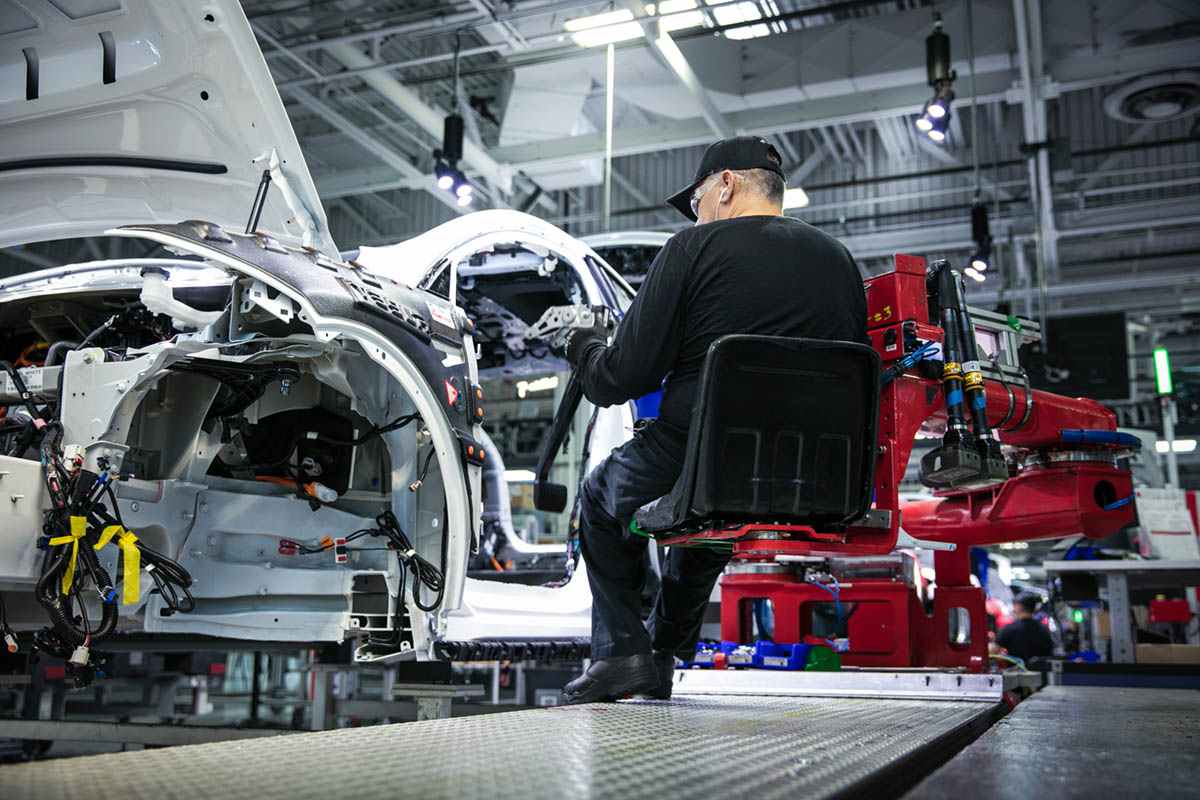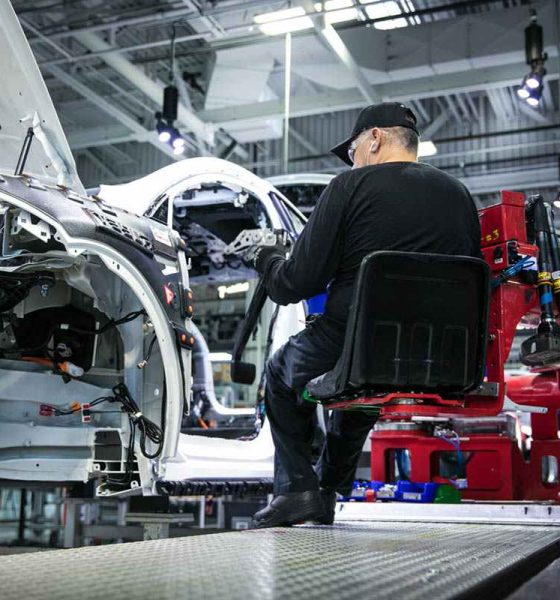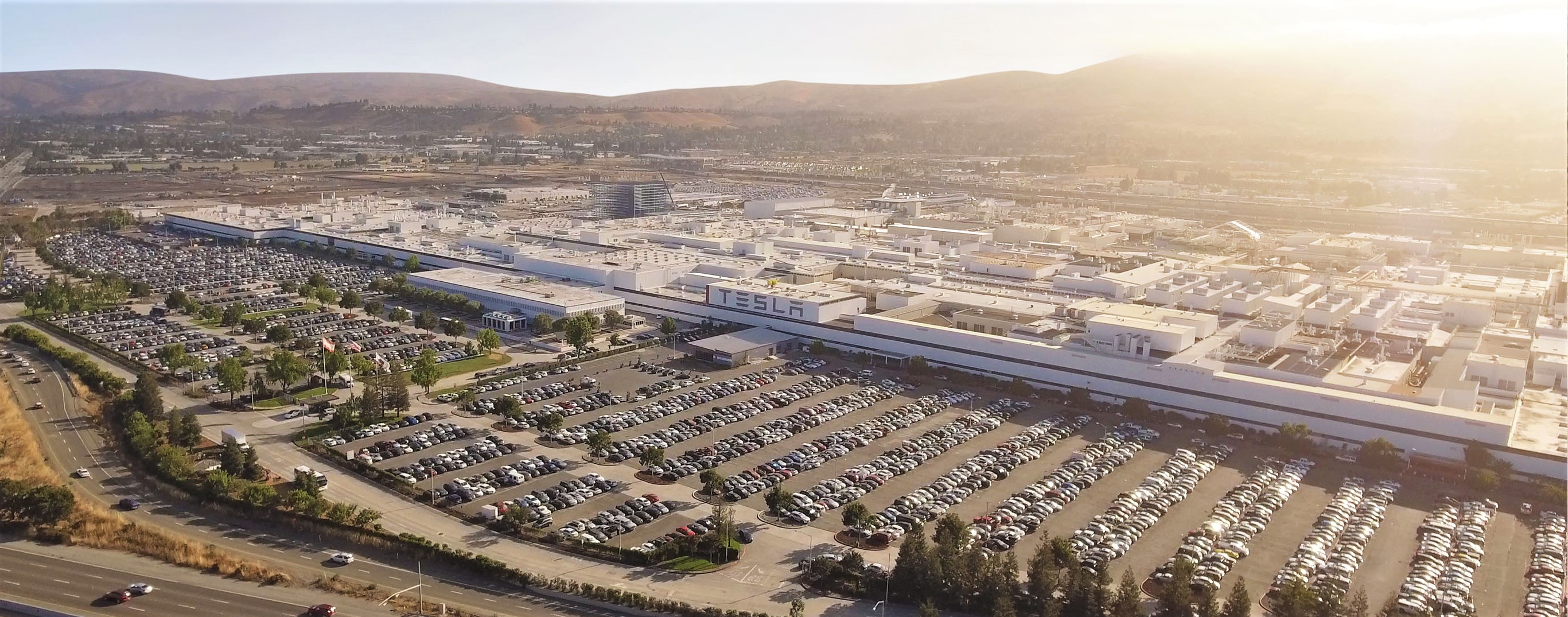

News
Tesla shares updates on workplace safety, CAL-OSHA investigation results
During the recently-held third quarter earnings call, CEO Elon Musk and VP for Environmental, Health and Safety (EHS) Laurie Shelby briefly discussed the safety initiatives that the company has implemented to keep its factory workers as safe as possible. In one of her remarks, the VP of EHS noted that it is an exciting time for Tesla today, as the company is making the “safest cars made by the safest people.”
In a recent blog post on Tesla’s official website, Laurie Shelby elaborated further on the company’s safety programs that were rolled out over the past year. Since joining Tesla back in October 2017, Shelby stated that her EHS team had grown to 250 employees, including 35 EHS staff in the Fremont factory alone. Several programs, some of which were teased during the earnings call, have also been started as part of Tesla’s pursuit of becoming the safest car factory on the market.
Back in June, for example, Tesla the started transitioning to a new occupational health clinic in the Fremont factory. These clinics are overseen by a leading California orthopedic surgeon specializing in the diagnosis and treatment of musculoskeletal injuries, which comprise around 85-90% of injuries in Tesla’s facilities. Shelby pointed out in her update that prior to its current system, Fremont’s health facility provided a lineup of services that was primarily focused on triage and first aid. With the newly rolled out clinic, Tesla’s workers can receive on-site, specialized care from full-time physicians who can provide medical assessments and immediate diagnosis.
As part of Tesla’s Early Symptom Intervention program, the company has also begun sending professional athletic trainers on the factory lines to identify potential injuries before they occur. These trainers are tasked with offering on-site evaluations and suggestions for improved ergonomic safety. So far, trainers have conducted more than 6,000 consultations with Tesla employees from the General Assembly, Seats, and Production Control lines, to name a few.
Perhaps most notable in the EHS VP’s update, though, was additional information on the CAL-OSHA investigation that was conducted earlier this year. Back in April, an expose by news agency Reveal based on accounts from alleged insiders and previous workers at Tesla accused the company of intentionally misreporting its injury rates. The expose blamed much of Tesla’s alleged safety problems on Elon Musk himself. At one point, for example, the publication noted that Tesla didn’t have enough hazard markings on the factory floor because “Elon does not like the color yellow.” Tesla promptly fired back, strongly denying the allegations in the report. A CAL-OSHA investigation into Tesla’s alleged malpractice eventually followed.
During the third quarter earnings call, Laurie Shelby noted that the CAL-OSHA investigation lasted four months, and the organization found no misreporting on Tesla’s part.

“The company here had a 4-month long Cal-OSHA investigation. And it basically proves that we are recording properly and doing as we should be. So it’s much different than what you would read about in the press,” she said.
In her safety update, Shelby added that after an extensive review of Tesla’s legally mandated records, injury logs, and safety policies, CAL-OSHA identified only two minor issues. One was an extension cord connected to a fan that created a potential trip hazard, and another was a date of injury that was incorrectly logged. Tesla promptly addressed the extension cord issue, while the incorrectly logged date of injury was immediately clarified and confirmed by a medical provider.
In true Tesla fashion, the company has ambitious goals when it comes to the safety of its employees. Earlier this year, for one, Shelby wrote a post announcing the company’s target of becoming the safest car factory in the world. The VP for EHS noted then that ultimately, workplace safety comes down to a combination of common sense, a culture that values safety, and a series of proactive preventive measures. If her recent update is any indication, it appears that over the past year, Tesla has started to make progress on all three fronts.
The full text of Tesla VP for EHS Laurie Shelby’s entire update could be accessed here.

Elon Musk
GM CEO Mary Barra says she told Biden to give Tesla and Musk EV credit
“He was crediting me, and I said, ‘Actually, I think a lot of that credit goes to Elon and Tesla…You know me, Andrew. I don’t want to take credit for things.”

General Motors CEO Mary Barra said in a new interview on Wednesday that she told President Joe Biden to credit Tesla and its CEO, Elon Musk, for the widespread electric vehicle transition.
She said she told Biden this after the former President credited her and GM for leading EV efforts in the United States.
During an interview at the New York Times Dealbook Summit with Andrew Ross Sorkin, Barra said she told Biden that crediting her was essentially a mistake, and that Musk and Tesla should have been explicitly mentioned (via Business Insider):
“He was crediting me, and I said, ‘Actually, I think a lot of that credit goes to Elon and Tesla…You know me, Andrew. I don’t want to take credit for things.”
GM CEO Mary Barra said to Andrew Sorkin at the New York Times Dealbook Summit that she pulled President Biden aside and said Tesla CEO @elonmusk deserved the credit for EVs:
“He was crediting me, and I said, ‘Actually, I think a lot of that credit goes to Elon and Tesla,’” Barra… pic.twitter.com/OHBTG1QfbJ
— TESLARATI (@Teslarati) December 3, 2025
Back in 2021, President Biden visited GM’s “Factory Zero” plant in Detroit, which was the centerpiece of the company’s massive transition to EVs. The former President went on to discuss the EV industry, and claimed that GM and Barra were the true leaders who caused the change:
“In the auto industry, Detroit is leading the world in electric vehicles. You know how critical it is? Mary, I remember talking to you way back in January about the need for America to lead in electric vehicles. I can remember your dramatic announcement that by 2035, GM would be 100% electric. You changed the whole story, Mary. You did, Mary. You electrified the entire automotive industry. I’m serious. You led, and it matters.”
People were baffled by the President’s decision to highlight GM and Barra, and not Tesla and Musk, who truly started the transition to EVs. GM, Ford, and many other companies only followed in the footsteps of Tesla after it started to take market share from them.
Elon Musk and Tesla try to save legacy automakers from Déjà vu
Musk would eventually go on to talk about Biden’s words later on:
“They have so much power over the White House that they can exclude Tesla from an EV Summit. And, in case the first thing, in case that wasn’t enough, then you have President Biden with Mary Barra at a subsequent event, congratulating Mary for having led the EV revolution.”
In Q4 2021, which was shortly after Biden’s comments, Tesla delivered 300,000 EVs. GM delivered just 26.
News
Tesla Full Self-Driving shows confident navigation in heavy snow
So far, from what we’ve seen, snow has not been a huge issue for the most recent Full Self-Driving release. It seems to be acting confidently and handling even snow-covered roads with relative ease.

Tesla Full Self-Driving is getting its first taste of Winter weather for late 2025, as snow is starting to fall all across the United States.
The suite has been vastly improved after Tesla released v14 to many owners with capable hardware, and driving performance, along with overall behavior, has really been something to admire. This is by far the best version of FSD Tesla has ever released, and although there are a handful of regressions with each subsequent release, they are usually cleared up within a week or two.
Tesla is releasing a modified version of FSD v14 for Hardware 3 owners: here’s when
However, adverse weather conditions are something that Tesla will have to confront, as heavy rain, snow, and other interesting situations are bound to occur. In order for the vehicles to be fully autonomous, they will have to go through these scenarios safely and accurately.
One big issue I’ve had, especially in heavy rain, is that the camera vision might be obstructed, which will display messages that certain features’ performance might be degraded.
So far, from what we’ve seen, snow has not been a huge issue for the most recent Full Self-Driving release. It seems to be acting confidently and handling even snow-covered roads with relative ease:
FSD 14.1.4 snow storm Ontario Canada pic.twitter.com/jwK1dLYT0w
— Everything AI (@mrteslaspace) November 17, 2025
I found the steepest, unplowed hill in my area and tested the following:
• FSD 14.2.1 on summer tires
• FSD 14.2.1 on winter tires
• Manual drivingBut I think the most impressive part was how FSD went DOWN the hill. FSD in the snow is sublime $TSLA pic.twitter.com/YMcN7Br3PU
— Dillon Loomis (@DillonLoomis) December 2, 2025
Well.. I couldn’t let the boys have all the fun!
Threw the GoPro up and decided to FSD v14.2.1 in the snow. Roads were not compacted like the other day, a little slippery, but overall doable at lower speeds. Enjoy the video and holiday music 🎶
Liked:
Took turns super slow… pic.twitter.com/rIAIeh3Zu3— 🦋Diana🦋 (@99_Colorado) December 3, 2025
Moving into the winter months, it will be very interesting to see how FSD handles even more concerning conditions, especially with black ice, freezing rain and snow mix, and other things that happen during colder conditions.
We are excited to test it ourselves, but I am waiting for heavy snowfall to make it to Pennsylvania so I can truly push it to the limit.
News
Tesla hosts Rome Mayor for first Italian FSD Supervised road demo
The event marked the first time an Italian mayor tested the advanced driver-assistance system in person in Rome’s urban streets.

Tesla definitely seems to be actively engaging European officials on FSD’s capabilities, with the company hosting Rome Mayor Roberto Gualtieri and Mobility Assessor Eugenio Patanè for a hands-on road demonstration.
The event marked the first time an Italian mayor tested the advanced driver-assistance system in person in Rome’s urban streets. This comes amid Tesla’s push for FSD’s EU regulatory approvals in the coming year.
Rome officials experience FSD Supervised
Tesla conducted the demo using a Model 3 equipped with Full Self-Driving (Supervised), tackling typical Roman traffic including complex intersections, roundabouts, pedestrian crossings and mixed users like cars, bikes and scooters.
The system showcased AI-based assisted driving, prioritizing safety while maintaining flow. FSD also handled overtakes and lane decisions, though with constant driver supervision.
Investor Andrea Stroppa detailed the event on X, noting the system’s potential to reduce severe collision risks by up to seven times compared to traditional driving, based on Tesla’s data from billions of global fleet miles. The session highlighted FSD’s role as an assistance tool in its Supervised form, not a replacement, with the driver fully responsible at all times.
Path to European rollout
Tesla has logged over 1 million kilometers of testing across 17 European countries, including Italy, to refine FSD for local conditions. The fact that Rome officials personally tested FSD Supervised bodes well for the program’s approval, as it suggests that key individuals are closely watching Tesla’s efforts and innovations.
Assessor Patanè also highlighted the administration’s interest in technologies that boost road safety and urban travel quality, viewing them as aids for both private and public transport while respecting rules.
Replies on X urged involving Italy’s Transport Ministry to speed approvals, with one user noting, “Great idea to involve the mayor! It would be necessary to involve components of the Ministry of Transport and the government as soon as possible: it’s they who can accelerate the approval of FSD in Italy.”








